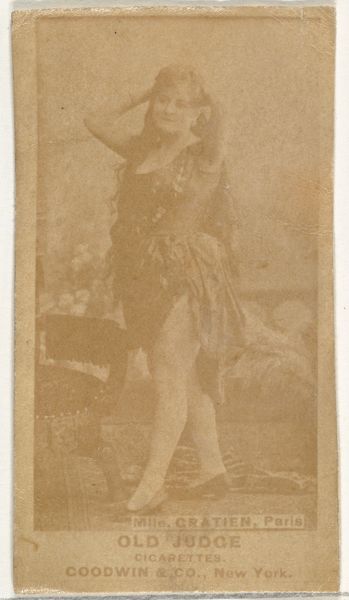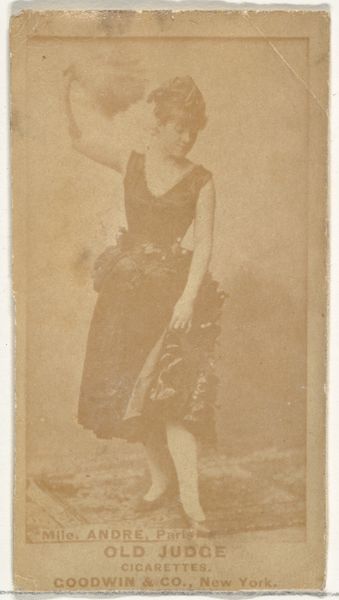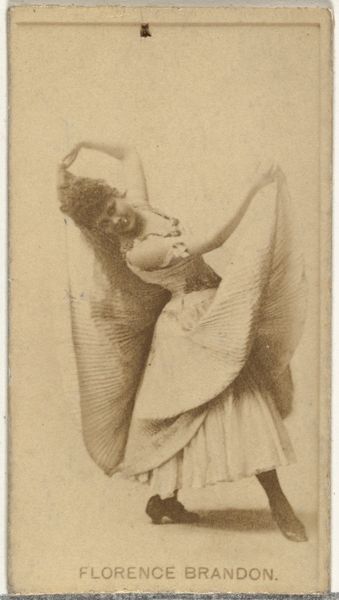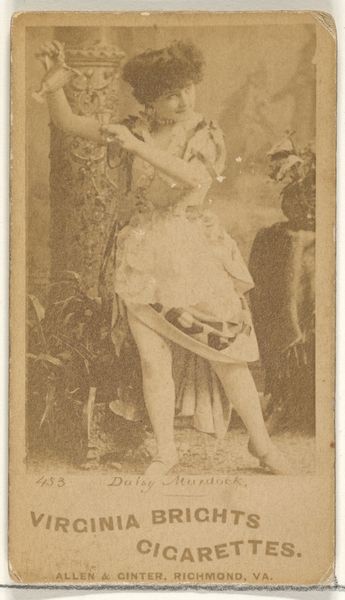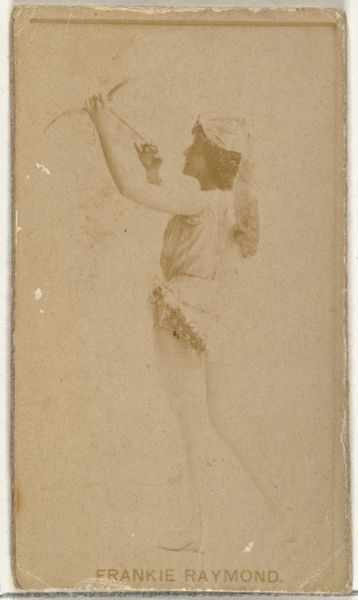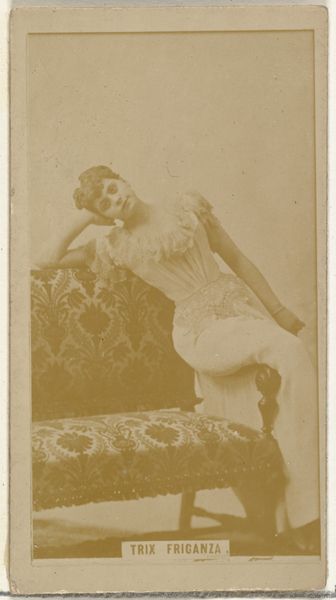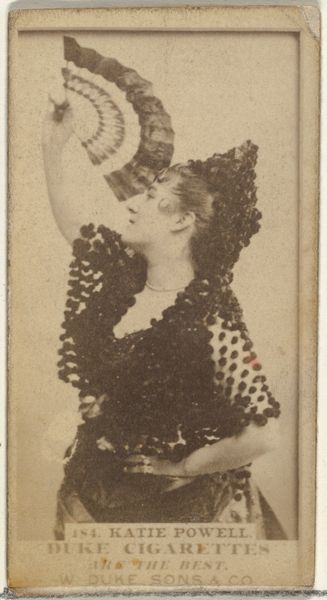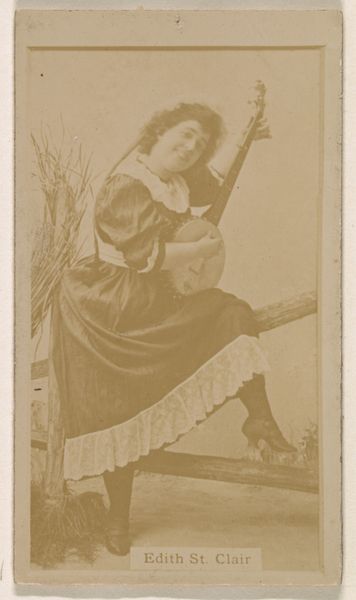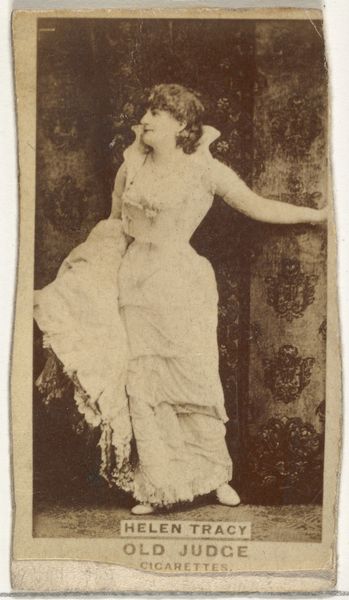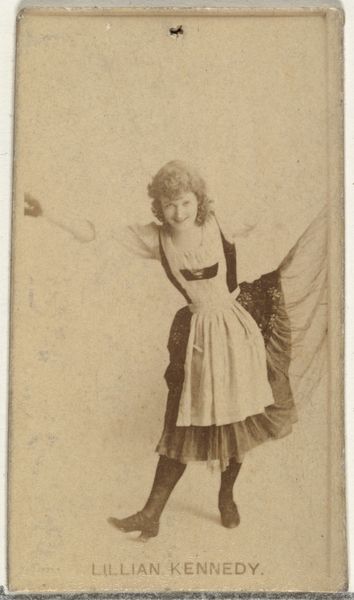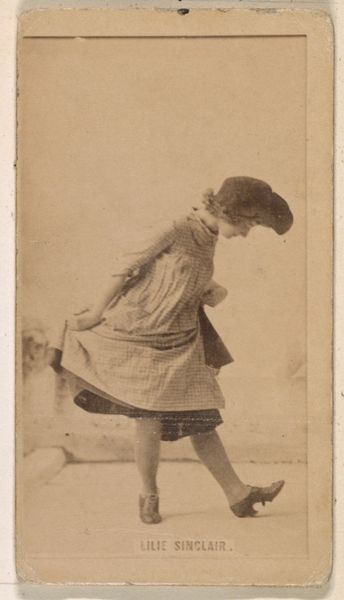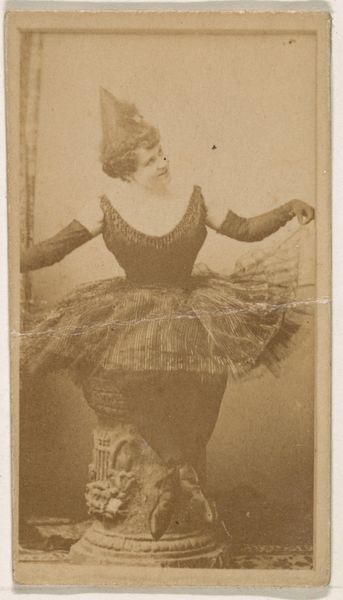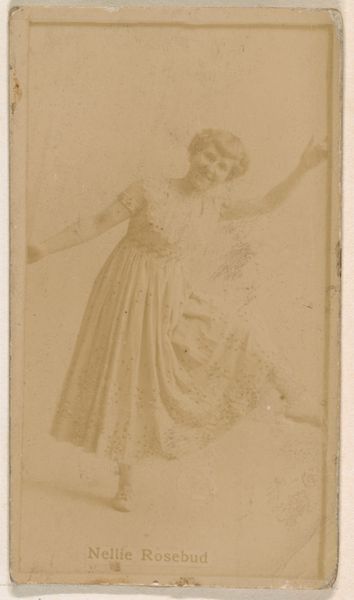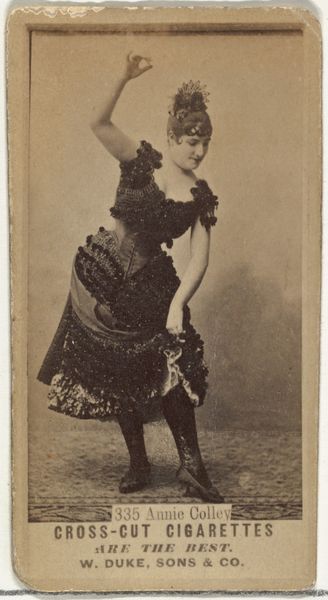
Card Number 368, Irene Condot, from the Actors and Actresses series (N145-3) issued by Duke Sons & Co. to promote Cross Cut Cigarettes 1880s
0:00
0:00
drawing, print, photography, albumen-print
#
portrait
#
drawing
# print
#
figuration
#
photography
#
albumen-print
Dimensions: Sheet: 1 7/16 × 2 11/16 in. (3.6 × 6.8 cm)
Copyright: Public Domain
Editor: This is Card Number 368, featuring Irene Condot, from the Actors and Actresses series. It's an albumen print from the 1880s, issued by Duke Sons & Co. as a promotional item for Cross Cut Cigarettes. I'm struck by the seemingly incongruous pairing of female athleticism with cigarette advertising. What are your thoughts on this juxtaposition? Curator: That's a great starting point. Let's unpack this. These cards were immensely popular, part of a broader phenomenon of using images of women, especially actresses and performers, to sell products. Considering the historical context, think about the limited roles afforded to women at the time. While this image seemingly celebrates Irene Condot's physical prowess, it simultaneously commodifies her image, placing her within a patriarchal structure of consumption. Do you see any tension there? Editor: I do. It feels like a carefully constructed image, meant to project both independence and accessibility. It's almost contradictory. Curator: Precisely! We have to consider this through a lens of power dynamics. How does the male gaze, for instance, influence the way we read this image? It’s not just a celebration of athleticism; it’s also about controlling and marketing female identity to a primarily male consumer base. Think about the performative nature of gender. The image participates in constructing certain ideals and expectations for women. Editor: So, the cigarette card isn't just an innocent piece of advertising. It's actually participating in the social and gender politics of the time? Curator: Absolutely. It’s a tiny piece of visual culture that reflects and reinforces complex social dynamics. By examining such everyday items, we gain invaluable insights into the ideologies that shaped the past. Editor: I'll definitely look at images like this differently going forward! There's much more to unpack than initially meets the eye. Curator: Exactly. That's the power of critically engaging with art and visual culture – it unveils the hidden narratives and power structures that shape our world.
Comments
No comments
Be the first to comment and join the conversation on the ultimate creative platform.
